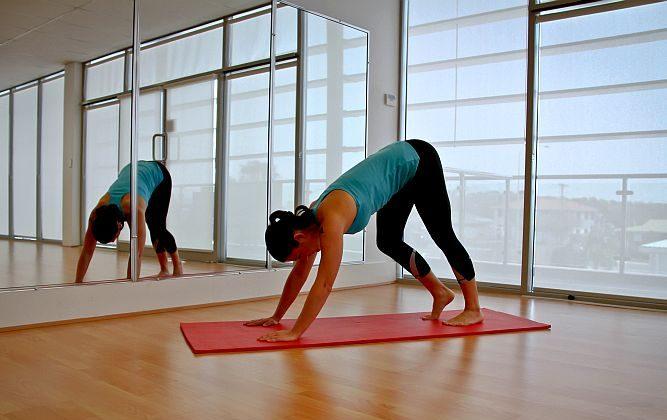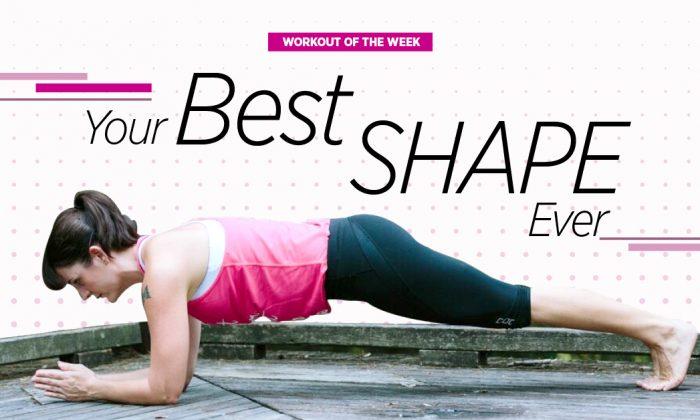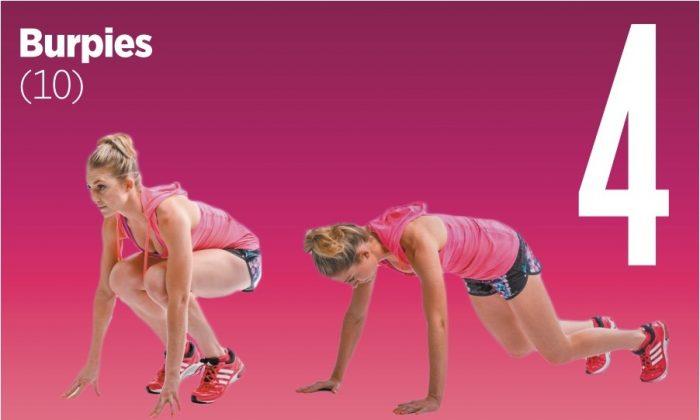Consider how much your calves get used every day. They contract with every step you take and then work even harder to walk up the stairs, jog, and run. If you wear high heels, your calf muscles are in a constant state of shortening.
Now consider how much time you spend stretching your calves. Let me guess—is the ratio a little uneven?
The emphasis on this stretch is on lengthening your calf muscles. In yoga, this position is called downward-facing dog. Due to the nature of the position, you will get more benefits than just a calf stretch.
This pose is actually a strength-based movement. It works on building muscular endurance predominately through your upper body. It is important not to hold for too long when starting out, as you don’t want to put unnecessary pressure through your neck and shoulders. Holding the pose for about a minute will give you plenty of time to give both your calves an adequate stretch.
I hope you will learn to love this stretch, with its added upper body strength benefits. It is also good for your core, as most stretches are if you know how to engage your deep abdominals correctly.
Getting Started
1. Start in a quadruped position with hands slightly wider than shoulders and knees under hips.
2. Draw up your pelvic floor (bladder control muscle). Draw in your abdominals by gently pulling your stomach away from your waistband.
3. Tuck your toes under and press through your hands as you lift your hips up into the air.
4. Press your chest toward your thighs. Your eye line should be at your thighs.
6. Bend your right knee, keeping your left leg as straight as possible.
7. Hold this position for 20–30 seconds, and then change sides.
8. Return to the quadruped position for a rest. Repeat one more time.
Focus Points
Remember to breathe. Your breath plays a vital role in movement and stretching. Breathing in synergy with specific exercise movements will promote strength. Staying connected with your breath while you stretch will help relax your body and the muscle you are stretching.
On the side that you are stretching, imagine your heel is drawing closer to the floor, as if magnets attached to your heel and the floor are bringing them closer together. The purpose is to lengthen the back of your lower leg. Don’t overdo it, though.
Stretch to approximately 70 percent of your maximum. Don’t risk tearing or overstretching by pushing too deeply into the stretch.
Emma-Kate Stampton certifies Pilates instructors and is a certified personal trainer. She is based in Brisbane, Australia.






Friends Read Free